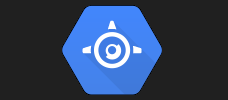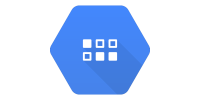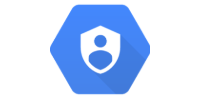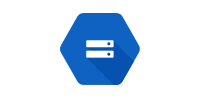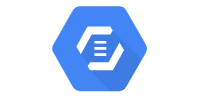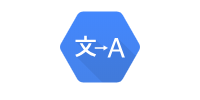Translation Web App Hello World
Translation Web App Hello World
This is a web app that uses Google Translate to analyze some text uploaded by the user.
View the code for this project here.
Download the code as a .zip from DownGit here.

pom.xml
pom.xml is a Maven POM file that defines the project.
<project xmlns="http://maven.apache.org/POM/4.0.0"
xmlns:xsi="http://www.w3.org/2001/XMLSchema-instance"
xsi:schemaLocation="http://maven.apache.org/POM/4.0.0 http://maven.apache.org/xsd/maven-4.0.0.xsd">
<modelVersion>4.0.0</modelVersion>
<groupId>io.happycoding</groupId>
<artifactId>google-cloud-translation-hello-world-webapp</artifactId>
<version>1</version>
<properties>
<!-- Java 11 -->
<maven.compiler.source>11</maven.compiler.source>
<maven.compiler.target>11</maven.compiler.target>
<project.build.sourceEncoding>UTF-8</project.build.sourceEncoding>
<jetty.version>9.4.31.v20200723</jetty.version>
<!-- Project-specific properties -->
<exec.mainClass>io.happycoding.ServerMain</exec.mainClass>
<googleCloudProjectId>happy-coding-gcloud</googleCloudProjectId>
</properties>
<dependencies>
<!-- Java Servlets API -->
<dependency>
<groupId>javax.servlet</groupId>
<artifactId>javax.servlet-api</artifactId>
<version>4.0.1</version>
</dependency>
<!-- Google Cloud Translation -->
<dependency>
<groupId>com.google.cloud</groupId>
<artifactId>google-cloud-translate</artifactId>
<version>1.95.2</version>
</dependency>
<!-- Jetty -->
<dependency>
<groupId>org.eclipse.jetty</groupId>
<artifactId>jetty-server</artifactId>
<version>${jetty.version}</version>
</dependency>
<dependency>
<groupId>org.eclipse.jetty</groupId>
<artifactId>jetty-annotations</artifactId>
<version>${jetty.version}</version>
</dependency>
</dependencies>
<build>
<plugins>
<!-- Copy static resources like html files into the output jar file. -->
<plugin>
<groupId>org.apache.maven.plugins</groupId>
<artifactId>maven-resources-plugin</artifactId>
<version>2.7</version>
<executions>
<execution>
<id>copy-web-resources</id>
<phase>compile</phase>
<goals><goal>copy-resources</goal></goals>
<configuration>
<outputDirectory>
${project.build.directory}/classes/META-INF/resources
</outputDirectory>
<resources>
<resource><directory>./src/main/webapp</directory></resource>
</resources>
</configuration>
</execution>
</executions>
</plugin>
<!-- Package everything into a single executable jar file. -->
<plugin>
<groupId>org.apache.maven.plugins</groupId>
<artifactId>maven-shade-plugin</artifactId>
<version>3.2.4</version>
<executions>
<execution>
<phase>package</phase>
<goals><goal>shade</goal></goals>
<configuration>
<createDependencyReducedPom>false</createDependencyReducedPom>
<transformers>
<transformer implementation="org.apache.maven.plugins.shade.resource.ManifestResourceTransformer">
<mainClass>${exec.mainClass}</mainClass>
</transformer>
</transformers>
<filters>
<filter>
<artifact>*:*</artifact>
<!-- The Cloud Translation library signs its jar, so exclude its signature in the output jar -->
<excludes>
<exclude>META-INF/*.SF</exclude>
<exclude>META-INF/*.DSA</exclude>
<exclude>META-INF/*.RSA</exclude>
</excludes>
</filter>
</filters>
</configuration>
</execution>
</executions>
</plugin>
<!-- App Engine plugin for deploying to the live site. -->
<plugin>
<groupId>com.google.cloud.tools</groupId>
<artifactId>appengine-maven-plugin</artifactId>
<version>2.2.0</version>
<configuration>
<projectId>${googleCloudProjectId}</projectId>
<version>1</version>
</configuration>
</plugin>
</plugins>
</build>
</project>
app.yaml
app.yaml is a config file that sets up App Engine. This hello world project only uses a single property that sets the runtime to Java 11.
runtime: java11
ServerMain.java
ServerMain.java is the main class that sets up the server.
package io.happycoding;
import java.net.URL;
import org.eclipse.jetty.annotations.AnnotationConfiguration;
import org.eclipse.jetty.server.Handler;
import org.eclipse.jetty.server.handler.DefaultHandler;
import org.eclipse.jetty.server.Server;
import org.eclipse.jetty.servlet.DefaultServlet;
import org.eclipse.jetty.webapp.Configuration;
import org.eclipse.jetty.webapp.WebAppContext;
import org.eclipse.jetty.webapp.WebInfConfiguration;
/**
* Starts up the server, including a DefaultServlet that handles static files,
* and any servlet classes annotated with the @WebServlet annotation.
*/
public class ServerMain {
public static void main(String[] args) throws Exception {
// Create a server that listens on port 8080.
Server server = new Server(8080);
WebAppContext webAppContext = new WebAppContext();
server.setHandler(webAppContext);
// Load static content from inside the jar file.
URL webAppDir =
ServerMain.class.getClassLoader().getResource("META-INF/resources");
webAppContext.setResourceBase(webAppDir.toURI().toString());
// Enable annotations so the server sees classes annotated with @WebServlet.
webAppContext.setConfigurations(new Configuration[]{
new AnnotationConfiguration(),
new WebInfConfiguration(),
});
// Look for annotations in the classes directory (dev server) and in the
// jar file (live server)
webAppContext.setAttribute(
"org.eclipse.jetty.server.webapp.ContainerIncludeJarPattern",
".*/target/classes/|.*\\.jar");
// Handle static resources, e.g. html files.
webAppContext.addServlet(DefaultServlet.class, "/");
// Start the server! 🚀
server.start();
System.out.println("Server started!");
// Keep the main thread alive while the server is running.
server.join();
}
}
TranslationServlet.java
TranslationServlet.java is a Java servlet that handles the POST request including the text entered by the user, sends the request for translation, and outputs the result.
package io.happycoding.servlets;
import com.google.cloud.translate.Translate;
import com.google.cloud.translate.TranslateOptions;
import com.google.cloud.translate.Translation;
import java.io.IOException;
import javax.servlet.annotation.WebServlet;
import javax.servlet.http.HttpServlet;
import javax.servlet.http.HttpServletRequest;
import javax.servlet.http.HttpServletResponse;
@WebServlet("/translate")
public class TranslationServlet extends HttpServlet {
@Override
public void doPost(HttpServletRequest request, HttpServletResponse response) throws IOException {
// Get the request parameters
String originalText = request.getParameter("text");
String languageCode = request.getParameter("languageCode");
// Get the translation
Translate translate = TranslateOptions.getDefaultInstance().getService();
Translation translation =
translate.translate(originalText, Translate.TranslateOption.targetLanguage(languageCode));
String translatedText = translation.getTranslatedText();
// Output the translation
response.setContentType("text/html; charset=UTF-8");
response.setCharacterEncoding("UTF-8");
response.getWriter().println(translatedText);
}
}
index.html
index.html is an HTML file that shows a form, and includes JavaScript that calls the fetch() function to send the user’s input to the server and show the result in the DOM.
<!DOCTYPE html>
<html>
<head>
<meta charset="UTF-8">
<title>Translation</title>
<script>
function requestTranslation() {
// Get the user's input from the UI
const text = document.getElementById('text').value;
const languageCode = document.getElementById('language').value;
// Show a placeholder while waiting for the response
const resultContainer = document.getElementById('result');
resultContainer.innerText = 'Loading...';
// Build the request params
const params = new URLSearchParams();
params.append('text', text);
params.append('languageCode', languageCode);
// Send a POST request to the server
fetch('/translate', {
method: 'POST',
body: params
})
// Convert the response to plain text
.then(response => response.text())
// Show the translated text in the page
.then((translatedMessage) => {
resultContainer.innerText = translatedMessage;
});
}
</script>
<style>
#text {
width: 500px;
height: 125px;
}
#language {
display: block;
margin-top: 25px;
margin-bottom: 25px;
}
</style>
</head>
<body>
<h1>Translation</h1>
<p>Type a message and select a language, then click submit to translate it.</p>
<textarea id="text"></textarea>
<select id="language">
<option value="en">English</option>
<option value="zh">Chinese</option>
<option value="es">Spanish</option>
<option value="hi">Hindi</option>
<option value="ar">Arabic</option>
</select>
<button onclick="requestTranslation();">Translate</button>
<hr/>
<div id="result"></div>
</body>
</html>
You can run this locally by executing this command:
mvn package exec:java
Then visit http://localhost:8080 in your web browser, and you should see this:

Learn more in these tutorials:
